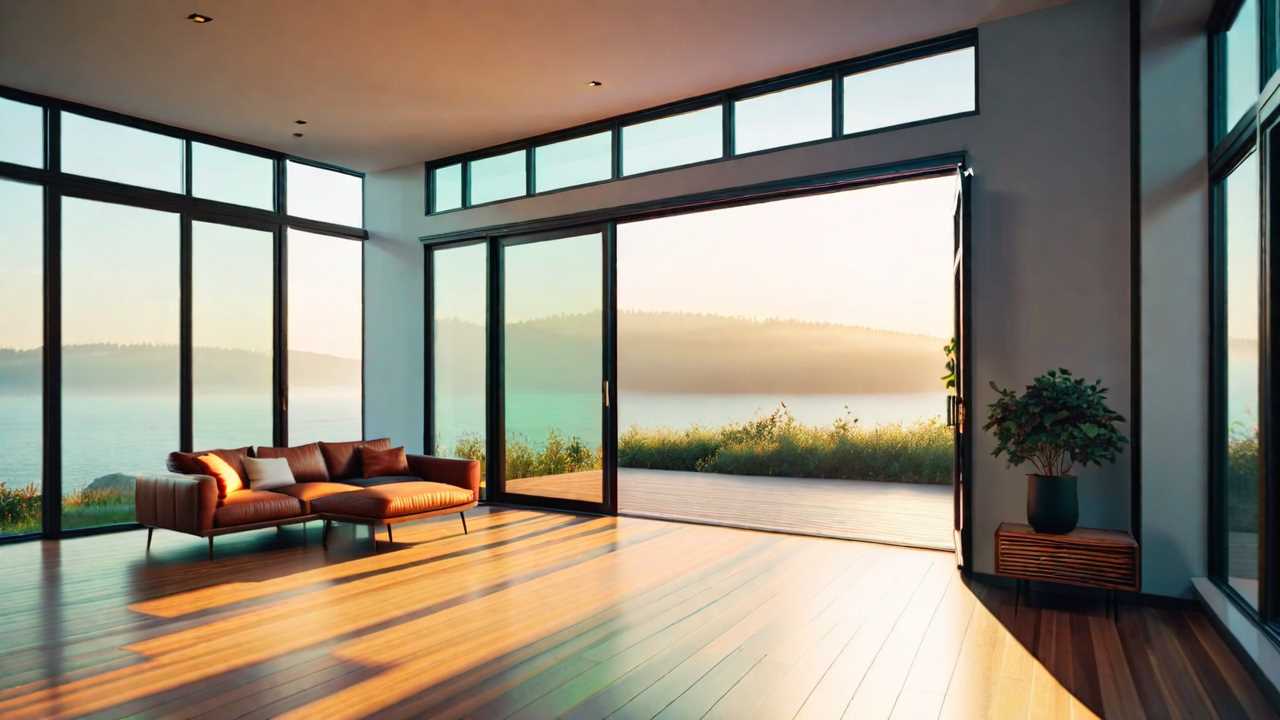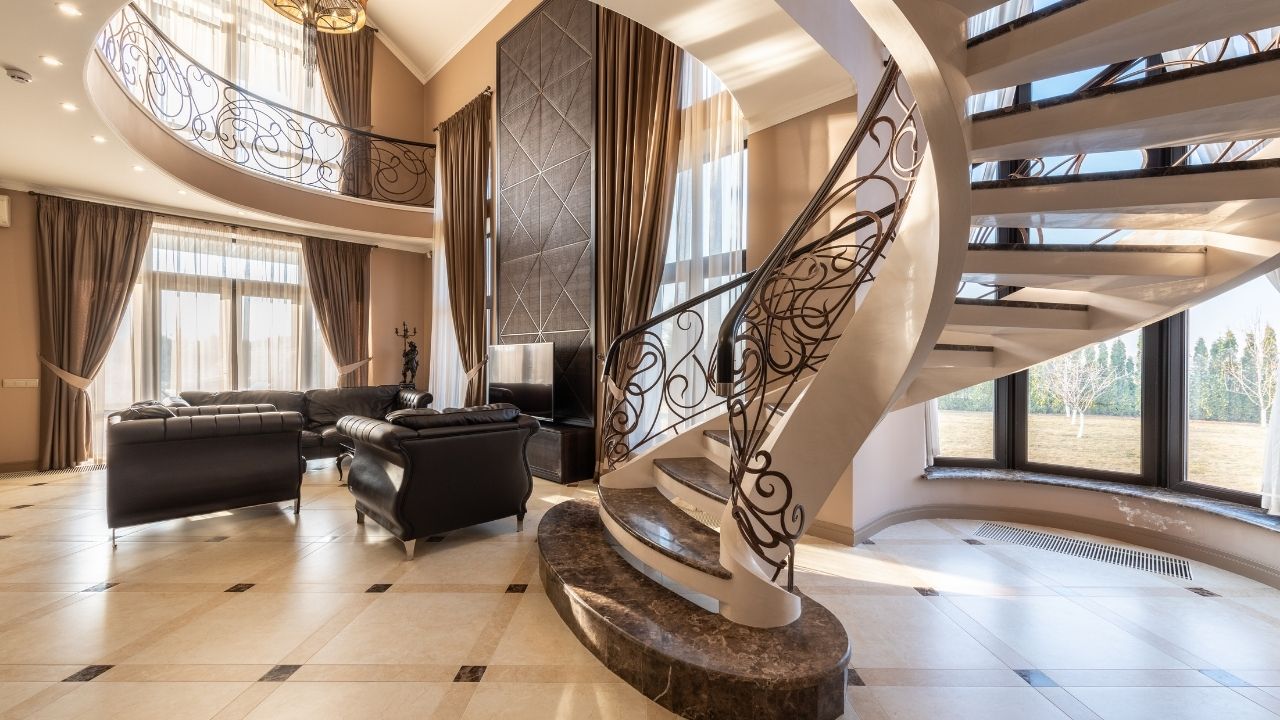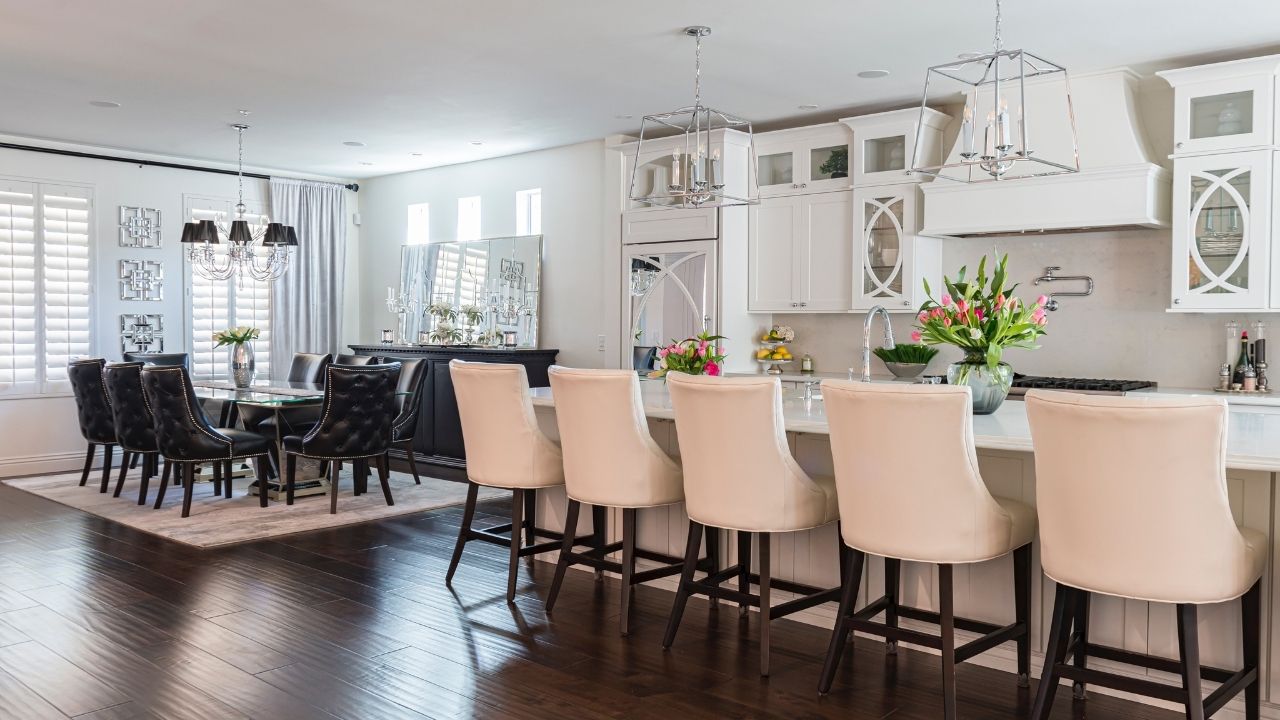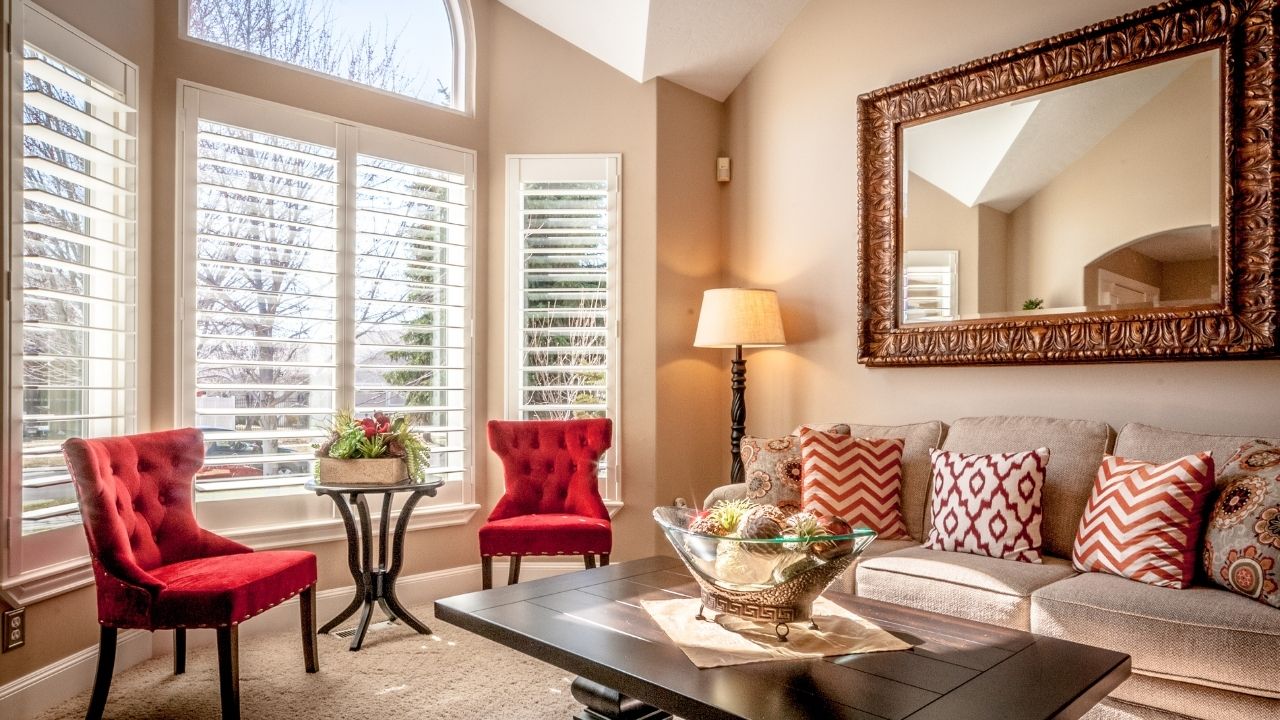
To improve natural lighting in your house, consider architectural features like skylights, clerestory windows, light tubes, glass doors, and open floor plans. These elements work harmoniously to invite more sunlight into your living spaces, creating a warm and inviting ambiance. By strategically incorporating these features into your home design, you can significantly enhance the brightness and overall feel of your living environment. The right architectural choices can transform your house into a radiant and comfortable sanctuary, making each room a joy to be in.
Skylights
To maximize natural lighting in a house, contemplate integrating skylights into the architectural design. Skylights are an excellent way to bring in an abundance of sunlight and create a sense of openness in your living space. When strategically placed, skylights can flood rooms with natural light, reducing the need for artificial lighting during the day.
When installing skylights, it’s important to take into account the orientation of your house and the path of the sun. South-facing skylights will provide consistent natural light throughout the day, while north-facing skylights may offer softer, indirect light. Additionally, the size and placement of skylights can impact the amount of light that enters a room. Larger skylights will let in more sunlight, while strategically positioning them over high-traffic areas like the kitchen or living room can maximize their effectiveness.
Integrating skylights into your home’s design not only amplifies natural lighting but also adds a touch of modern elegance to the architecture. Enjoy the freedom of basking in the sun’s rays from the comfort of your own home with thoughtfully placed skylights.
Clerestory Windows
Consider incorporating clerestory windows into your architectural design to enhance natural lighting in your home while adding a unique aesthetic touch. Clerestory windows are horizontally elongated windows positioned high on walls near the ceiling. They allow sunlight to penetrate deep into a room, creating a bright and airy atmosphere. By placing these windows strategically, you can maximize the amount of natural light entering your home without compromising privacy.
These windows work by capturing sunlight from above the roofline, directing it downward into the living space. This design not only improves the interior lighting but also reduces the need for artificial lighting during the day, thereby saving energy. Clerestory windows are versatile and can be incorporated into various architectural styles, from modern to traditional.

In addition to their functional benefits, clerestory windows can also serve as design elements, adding visual interest and architectural flair to your home. Their placement high on walls draws the eye upward, creating a sense of spaciousness and elegance. Explore the freedom that clerestory windows offer in illuminating your living spaces naturally.
Light Tubes
Improve natural lighting in your home by incorporating light tubes, cylindrical structures that capture sunlight and channel it into interior spaces, providing a sustainable and energy-efficient lighting solution. Light tubes, also known as solar tubes or sun tunnels, consist of a roof-mounted dome that collects sunlight. The sunlight is then reflected down a highly reflective tube made of materials like aluminum, delivering light into your home’s darker areas.
These tubes are versatile and can be installed in various locations, from bathrooms and kitchens to hallways and closets. By strategically placing light tubes, you can illuminate spaces that are typically hard to reach with traditional windows or skylights. Light tubes come in different sizes and designs to fit your home’s aesthetics and lighting needs.
Not only do light tubes reduce the need for artificial lighting during the day, but they also enrich the overall ambiance of your living space. Embrace the freedom of natural light with these innovative architectural features.
Glass Doors
How can glass doors enhance natural lighting and architectural aesthetics in your home?
Glass doors are a fantastic way to welcome natural light into your living space while adding a touch of modern elegance. By incorporating glass doors, you can create a seamless transition between indoor and outdoor areas, allowing light to penetrate deeper into your home. The transparency of glass doors maximizes the flow of natural light, making rooms feel more spacious and airy.
To amplify the effect of glass doors, consider installing them in areas that receive ample sunlight throughout the day. This strategic placement will optimize the amount of light that enters your home, reducing the need for artificial lighting during daylight hours. Additionally, glass doors can offer beautiful views of your outdoor surroundings, connecting you with nature while indoors.

Whether you opt for sliding, French, or pivot glass doors, each style brings its own unique charm and functionality. Embrace the freedom of natural light with glass doors that not only brighten your home but also elevate its architectural appeal.
Open Floor Plans
Improving both natural lighting and spatial flow, open floor plans seamlessly integrate different living areas within a home. By removing unnecessary walls and barriers, open floor plans create a sense of freedom and connectivity between spaces. This design concept allows natural light to penetrate deeper into the interior, boosting the overall brightness of the house.
With an open floor plan, you can maximize the use of windows and skylights to bring in more sunlight throughout the day. The absence of walls allows light to travel unobstructed, illuminating various corners of the living space. Additionally, the seamless transition between rooms promotes better air circulation and a more expansive feel.
To further boost natural lighting in a house with an open floor plan, consider incorporating reflective surfaces like mirrors or light-colored finishes to bounce light around the space. By strategically placing furniture and decor, you can also optimize the distribution of natural light, creating a bright and welcoming atmosphere throughout the entire home.
Frequently Asked Questions
How Can Landscaping Impact Natural Lighting in a House?
Enhancing natural lighting through landscaping involves strategic placement of trees and shrubs to filter sunlight, maximizing illumination. Consider tall trees on the south side for shading and lower plants on the east and west for direct light.
Are There Energy-Efficient Options for Enhancing Natural Lighting?
To optimize natural lighting efficiently, consider features like skylights, light tubes, and larger windows. These additions not only brighten your space but also reduce the need for artificial lighting, saving energy and fostering a connection to the outdoors.
Can the Orientation of the House Affect Natural Lighting?
When designing your house, remember, the orientation impacts natural lighting. Positioning windows towards the south maximizes sunlight. Implementing features like clerestory windows or skylights can further improve natural light, creating a bright and airy feel.

What Are the Best Window Treatments to Maximize Natural Light?
To maximize natural light, choose sheer curtains or blinds that allow sunlight to filter through while providing privacy. Consider light-colored, reflective window treatments to bounce light into the room. Keep them open during the day for peak brightness.
Is It Possible to Retrofit Existing Homes for Better Natural Lighting?
Want to let the sun shine in? You can totally revamp your existing home for better natural lighting. With strategic window placement, light tubes, and reflective surfaces, your space will be flooded with sunshine.